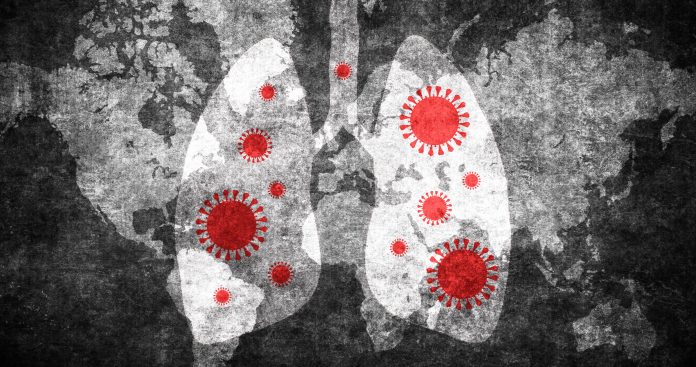
Organ impairment persisted in more than half of over 500 individuals who followed up at one year post COVID-19. Symptoms included extreme breathlessness, cognitive dysfunction, and poor health-related quality of life.
These findings have implications on follow-up treatment and longer-term health, even among younger patients with no comorbidities. Earlier work by this team has shown that MRI is useful for detecting such damage.
The study appeared this week in the Journal of the Royal Society of Medicine, and its senior author is Amitava Banerjee, Department of Medicine, University College London Hospitals NHS Foundation Trust, London.
As the researchers write, “Symptoms of long COVID, also known as post-acute sequelae of COVID-19, are well documented, but natural history is poorly characterized, either by symptoms, organ impairment or function.”
To further address this question, these researchers assessed symptoms, health status, and multi-organ tissue characterization and function at six and twelve months after patients recovered from acute COVID-19. These patients came from two healthcare settings— Oxford and London.
A total of 536 individuals were studied with an average age of 45. They were 73% female, 89% White, 32% healthcare workers, and 13% had acute COVID-19 hospitalization. Of those, 331 (62%) showed organ impairment or incidental findings and had follow-up.
Extreme breathlessness (38% and 30%), cognitive dysfunction (48% and 38%) and poor health-related quality of life (57% and 45%) were common at 6 and 12 months. These symptoms were associated with female gender, younger age, and single-organ impairment. Single- and multi-organ impairment were present in 69% and 23% at baseline, persisting in 59% and 27% at follow-up, respectively.
This supports other findings. An online survey published in 2021, found that among more than 3,700 individuals with suspected or confirmed COVID-19, debilitating symptoms lasted more than 35 weeks. Fatigue, breathlessness, and cognitive dysfunction were the most frequent symptoms. And, in findings from the U.K.’s largest long COVID clinic, non-hospitalized patients required specialist referral at similar rates to hospitalized patients and were more likely to report breathlessness and fatigue, with reduced health-related quality of life.
In an earlier study, Banerjee’s team performed magnetic resonance imaging (MRI) data on 201 individuals. It revealed mild organ impairment in the heart, lungs, kidneys, liver, pancreas and spleen, with single- and multi-organ impairment in 70% and 29% of patients (respectively) four months after COVID-19.
“Clinical utility of these MRI metrics for chronic and multi-system conditions has been shown,” these authors noted in that paper.
The U.K., other countries, and researchers have been responding to long COVID. But as these researchers note, “Clinical patient pathways are unclear and there are still no proven, evidence-based therapies, either in subgroups or in the overall long COVID population.”
They add that though long COVID has been thought to be linked to severity of initial illness, “Prognostic factors are neither defined nor investigated systematically in non-hospitalized patients. To conduct trials of possible therapies for long COVID, we need stratification by symptoms or investigations.”













